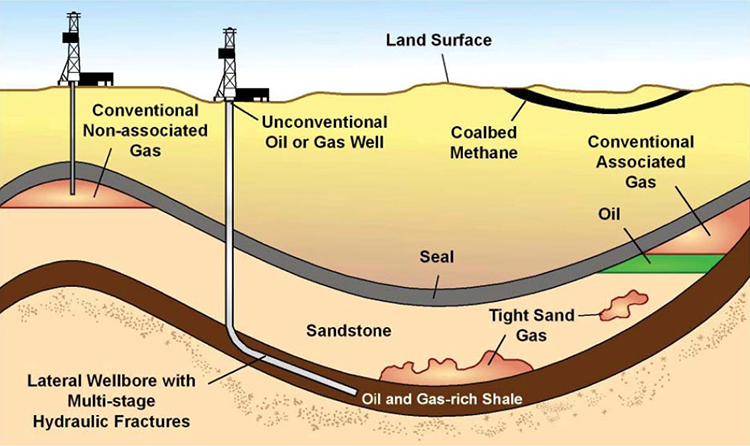The word “Petroleum” has its origin in the Greek words “petra” for “rock” and “oleum” for “oil”. Petroleum, or crude oil, is a naturally occurring liquid found in porous rocks (reservoirs) below the earth’s surface. It is an organic material comprised of hydrocarbon molecules (molecules formed by hydrogen and carbon atoms) with possible inorganic contaminates, such as nitrogen (N2), carbon dioxide (CO2), hydrogen sulfide (H2S), and others.
Crude oil is found in subsurface rock formations known as oil reservoirs. It is typically found in the presence of natural gas (associated natural gas). Associated natural gases are hydrocarbon gases that co-exists with the crude oil and may be present as: (1) gas dissolved in the crude oil (solution gas), (2) a distinct gas phase in contact with the crude oil (free gas), or (3) both. Natural gas may also exist with no crude oil present (non-associated gas) in natural gas reservoirs. In the context just described, the terms “associated gas” and “non-associated gas” refer to the association of the gas with a liquid hydrocarbon phase. This is illustrated in Figure 1.01.
